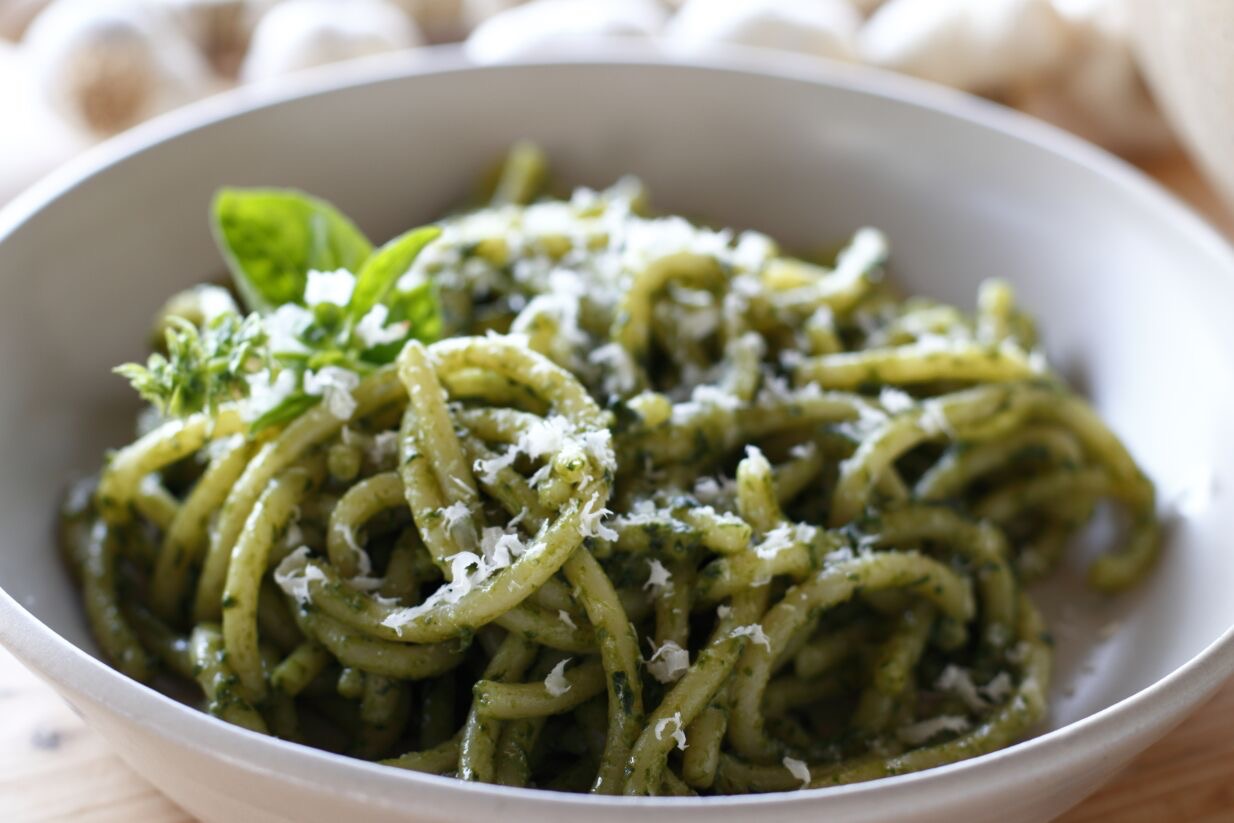Pasta must be one of the most satisfying and delicious foods. Though you might think otherwise, Italians will tell you that it’s easy & quick to make. They are indeed right. What you need to master are a number of basic rules in order to achieve perfection. Once you’ve tried and applied them a few times, pasta cooking will get embedded in your genes, just like an Italian.

1. Buy the right pasta!
Dried pasta should contain only two ingredients: semolina flour and water. No added ingredients or enrichments and added vitamins, nothing else. When possible pick a small batch producer that focuses on quality. Artisanal pasta is usually made with Italian top quality wheat, extruded in copper molds and dried slowly. Extruding the pasta through copper molds yields a porous pasta, with ridges and imperfections on the surface allowing the pasta to hold sauce way better. Mass produced pasta is smooth and shiny (the reason why it does not hold the sauce well as the artisanal one) because of the cheaper stainless steel or Teflon molds with which it is extruded. Artisanal Italian pasta is also dried at much lower temperatures and for a longer time, sometimes up to 60 hours, a process which preserves more of the wheat’s fragrance and nutrients. You can tell the difference from the color: industrial pasta, dried fast and at high temperatures, is usually orangey-yellow since it has basically gone through a sort of pre-cooking phase. Slow dried pasta instead is whiter and will have a longer suggested cooking time.
2. Cook it in the right amount of boiling water!
Pasta needs lots of boiling water to roam around in whilst cooking, so use a nice large pot. Once your water is boiling add some salt, then add the pasta and cook for suggested time on pack. Stir occasionally to prevent it from sticking to the pot.
3. Cook it al dente!
‘Al dente’ literally means cooked at tooth: pasta should never be mushy and soft, it should always have a nice bite to it and be firm and elastic. So follow the suggested time printed on the pack strictly and try the pasta when there’s one minute left, just to be sure. You might find you like it a little less cooked for that perfect “al dente” bite!
4. Finish it in the pan!
Just before draining save a little cooking water and add it to your sauce which at this stage should be bubbling in a pan on the stove. Add the strained pasta and sauté until water is absorbed. This will give your dish a creamier texture because the pasta water contains lots of starch. At this stage you can add some EVOO and parmesan cheese (if it goes well with the sauce) which will make it all come together even more. This rule works most of the times, but there are a couple exceptions when the sauce should not be heated directly in a pan, such as pesto or carbonara. In these cases you still add a little cooking water, but not over heat.

5. Match the right pasta with the right sauce!
Each region today has its traditional pasta variations, there are well over 350 shapes throughout the country. If there are hundreds of shapes there are just as many variations of sauces. There is a right sauce for every shape, take inspiration from traditional Italian pairings or imagine how the sauce will be ‘picked up’ by the shape.